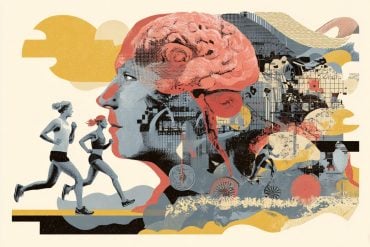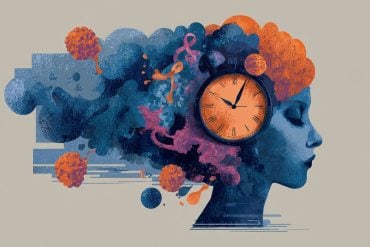Summary: Researchers demonstrated promising results for PTSD treatment in military veterans by combining brain stimulation with virtual reality exposure therapy. The clinical trial showed significant reductions in PTSD symptoms among participants who received low electrical current brain stimulation during virtual reality sessions designed to simulate warzone experiences.
This innovative approach, which outperformed traditional exposure therapy in both efficacy and participant retention, represents a novel method of addressing the complex challenge of treating PTSD. The study underscores the potential of integrating neuroscientific interventions with psychological therapy to enhance treatment outcomes for individuals struggling with PTSD, offering new pathways for recovery.
Key Facts:
- Innovative Treatment Combination: The study combined transcranial direct current stimulation with virtual reality exposure to treat PTSD in military veterans, showing significant symptom reduction.
- Enhanced Treatment Efficacy: Participants receiving the combined treatment reported superior improvement in PTSD symptoms compared to those receiving sham treatments, indicating a potentially more effective approach to PTSD care.
- Promising Results for PTSD Management: This approach accelerated psychological adjustment to trauma, suggesting that integrating brain stimulation with VR could revolutionize PTSD treatment.
Source: Brown University
Combining two treatments could be a promising option for people, especially military veterans, whose lives are negatively affected by post-traumatic stress disorder, a new study shows.
In a clinical trial conducted among U.S. military veterans at the Providence Veterans Affairs Medical Center, participants who received brain stimulation with a low electrical current during sessions of virtual reality exposure reported a significant reduction in PTSD symptom severity.
The results were reported on March 6 in JAMA Psychiatry.

Study author Noah Philip, a professor of psychiatry and human behavior at Brown University’s Warren Alpert Medical School, said the findings are exciting considering existing challenges in treating patients with PTSD.
“This is a different and innovative way of approaching treatment where we’re combining the best aspects of psychotherapy, neuroscience and brain stimulation to help people get better,” said Philip, who leads mental health research at the Providence V.A. Center for Neurorestoration and Neurotechnology.
“There’s a lot of promise here, and that offers hope.”
PTSD is a common psychiatric disorder characterized by intrusive thoughts and recollections, avoidance of trauma-related stimuli, hyperarousal and disturbed mood, the study noted. Initial PTSD treatments often include trauma-focused exposure therapy and medication.
Yet PTSD is particularly difficult to treat in military veterans, Philip said. Medications have significant adverse effects, and exposure therapy can be difficult to tolerate, since it involves describing highly traumatic experiences repeatedly. Up to 50% of patients drop out of traditional exposure therapy, and others decline to even start it.
For the study, Philip, whose background is in psychiatric research of brain simulation, teamed up with Mascha van ‘t Wout-Frank, an associate professor of psychiatry and human behavior (research) at the Warren Alpert Medical School who studies the effect of non-invasive brain stimulation on “fear extinction,” or learning that things that are regarded as harmful can actually be safe and can therefore become tolerable.
“Through exposure therapy, the brain is reprocessing the trauma, and learning that even though the traumatic experience was dangerous, the memories of the traumatic experience, as well as the thoughts and feelings that are conjured up by those memories, are not dangerous — they are safe,” said van ‘t Wout-Frank, an investigator at the V.A. Providence Center for Neurorestoration and Neurotechnology.
“This results in a decline in conditioned fear response.” ”
A leading theory of PTSD posits that the effectiveness of exposure as a therapy is impaired due to ineffective top-down control of the brain’s amygdala by the ventromedial prefrontal cortex and other brain regions. Affected individuals thus have impaired safety learning and memory, which in healthy people is supported by intact brain function, van ‘t Wout-Frank said.
Transcranial direct current stimulation, which involves administering a constant, low, pain-free electrical current to a part of the brain, is well-suited to potentially augment trauma-focused exposure therapy, van ’t Wout-Frank said. The non-invasive current may boost neural activity, facilitating top-down control by the ventromedial prefrontal cortex to improve safety learning.
The research team decided to combine transcranial direct current stimulation with virtual reality exposure, which provides a highly immersive sensory experience including visual, tactile and even olfactory stimuli to simulate real-world environments.
A treatment that accelerates results
To test the combined treatment, the researchers expanded a previous pilot study to conduct a larger, more robust, double-blind study of 54 U.S. military veterans with chronic PTSD. Participants were randomly assigned to receive transcranial direct current stimulation or a sham experience that provided some sensation but not a significant amount or duration of electrical current.
In the patients receiving transcranial direct current stimulation, a low (2 milliamp) amount of electricity was targeted to the ventromedial prefrontal cortex during six 25-minute sessions of standardized warzone virtual reality exposure, delivered over two to three weeks.
Participants in the active transcranial direct current stimulation group reported a superior reduction in self-reported PTSD symptom severity at one month. While all participants had meaningful reductions in PTSD symptoms (attributed to the VR procedure), active transcranial direct current stimulation significantly accelerated psychological and physiological adjustment to the virtual reality events between sessions compared with the sham treatment patients.
In the experiment, the virtual reality was generalized to include trauma-inducing elements, but didn’t replicate any one participant’s personal experience.
“It can be difficult for patients to talk about their personal trauma over and over, and that’s one common reason that participants drop out of psychotherapy,” Philip said. “This VR exposure tends to be much easier for people to handle.”
In just two weeks, the combination of electric stimulation plus VR treatment accelerated a process that happens normally during prolonged exposure therapy, but usually takes around 12 weeks to show effects.
What’s more, Philip added, the effects continued to build over time.
“What we found was that people continued to get better after they were done with the treatment, and we started seeing the biggest effects one month later,” Philip said.
The team is continuing to review the study results to better understand how the treatment caused brain changes over time. Future studies would explore a larger group of study participants, a longer follow-up time, and perhaps even the effects of re-treatment.
Other Brown researchers involved with this study included Amanda R. Arulpragasam, M. Tracie Shea and Benjamin D. Greenberg.
Funding: This study was supported by grants from the U.S. Department of Veterans Affairs (I01 RX002450, I50 RX002864)
About this PTSD and neurotech research news
Author: Corrie Pikul
Source: Brown University
Contact: Corrie Pikul – Brown University
Image: The image is credited to Neuroscience News
Original Research: Open access.
“Virtual Reality and Transcranial Direct Current Stimulation for Posttraumatic Stress Disorder A Randomized Clinical Trial” by Noah Philip et al. JAMA Psychiatry
Abstract
Virtual Reality and Transcranial Direct Current Stimulation for Posttraumatic Stress Disorder A Randomized Clinical Trial
Importance
Posttraumatic stress disorder (PTSD) is a common psychiatric disorder that is particularly difficult to treat in military veterans. Noninvasive brain stimulation has significant potential as a novel treatment to reduce PTSD symptoms.
Objective
To test whether active transcranial direct current stimulation (tDCS) plus virtual reality (VR) is superior to sham tDCS plus VR for warzone-related PTSD.
Design, Setting, and Participants
This double-blind randomized clinical trial was conducted among US military veterans enrolled from April 2018 to May 2023 at a secondary care Department of Veterans Affairs hospital and included 1- and 3-month follow-up visits. Participants included US military veterans with chronic PTSD and warzone-related exposure, recruited via referral and advertisement. Patients in psychiatric treatment had to be on a stable regimen for at least 6 weeks to be eligible for enrollment. Data were analyzed from May to September 2023.
Intervention
Participants were randomly assigned to receive 2-mA anodal tDCS or sham tDCS targeted to the ventromedial prefrontal cortex, during six 25-minute sessions of standardized warzone VR exposure, delivered over 2 to 3 weeks.
Main Outcomes and Measures
The co–primary outcomes were self-reported PTSD symptoms, measured via the PTSD checklist for DSM-5 (PCL-5), alongside quality of life. Other outcomes included psychophysiological arousal, clinician-assessed PTSD, depression, and social/occupational function.
Results
A total of 54 participants (mean [SD] age, 45.7 [10.5] years; 51 [94%] males) were assessed, including 26 in the active tDCS group and 28 in the sham tDCS group. Participants in the active tDCS group reported a superior reduction in self-reported PTSD symptom severity at 1 month (t = −2.27, P = .02; Cohen d = −0.82). There were no significant differences in quality of life between active and sham tDCS groups. Active tDCS significantly accelerated psychophysiological habituation to VR events between sessions compared with sham tDCS (F5,7689.8 = 4.65; P < .001). Adverse effects were consistent with the known safety profile of the corresponding interventions.
Conclusions and Relevance
These findings suggest that combined tDCS plus VR may be a promising strategy for PTSD reduction and underscore the innovative potential of these combined technologies.
Trial Registration
ClinicalTrials.gov Identifier: NCT03372460






